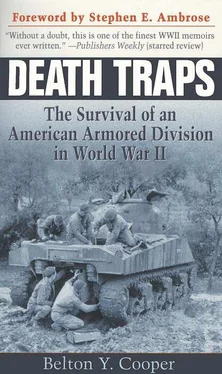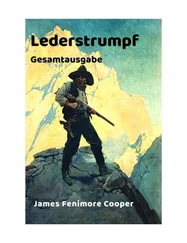I took several pictures of the statue, then found a number of battered postcards in the little tourist center at the base of the statue. I later gave them to Aunt Betty, who was angry that I hadn’t blown up the statue. I explained that a quarter-ton Jeep loaded with TNT wouldn’t have been enough to destroy it. That seemed to assuage her fury.
German soldiers were being repatriated as rapidly as possible. If their background and personnel data showed no possible record of war crimes or high Nazi connections, they were dismissed immediately. Many of the high-ranking officers, particularly in the SS, were held for further questioning.
Although the war had been over for about a month, we still saw groups of German soldiers in uniform walking along the road heading toward their homes. Even though they were disarmed, they had to wear their uniforms because that was their only clothing. The men were either very young, many in their early teens, or in their late fifties and sixties. There was an almost complete absence of men in their twenties, thirties, and forties; they had been killed or wounded long ago.
My Christian background told me that I should have sympathy and understanding for the defeated enemy, but the memory of the devastation they had caused made me feel hatred instead, even for the women and children. Although we had accepted war as a terrible barbaric tradition, the Germans breached all bounds of humanity: the machine-gunning of disarmed American soldiers at Malmédy; the wanton slaughter of Belgian civilians in Stavelot; the deliberate starvation, torture, and the killing of millions of innocent civilians at Nordhausen, Belsen, and Auschwitz revealed the ghastly genocide that Hitler inflicted on an entire generation. These terrors were incomprehensible to the American mind; there was no answer.
The First Industrial Survey of Postwar Germany
The joint Allied high command ordered a preliminary survey of all German industries to determine what each one made before and during the war and what it was capable of making after the war. The survey would produce a rough listing of German facilities, with particular emphasis on military technology, sources of raw material, and the status of utilities. It would seize and impound all documents and technical information.
The American sector of occupied Germany was divided into division areas. The primary function was to feed and clothe the civilians in each area and get industry and agriculture going as a productive enterprise as quickly as possible. The 3d Armored Division area was divided into three segments, one for each liaison officer. My area was a pie-shaped segment extending northwest from Darmstadt at the apex, with the Rhine River on the west and the Main River on the north. It included the cities of Gross-Gerau and Rüsselsheim plus numerous other small towns and villages.
Our liaison group reported to division headquarters to receive our instructions for the survey. We were given lists and locations of major German industries in our area and were told to be on the lookout for other industries not listed and to survey them if we felt they had any significant value. We received printed forms, several pages each, on which to record all pertinent information plus any comments we might choose to add.
In addition to my driver and my Jeep, I was assigned an American soldier who was fluent in German. We also had a copy of a SHAEF order written in both English and German directing German civilians to cooperate with us fully.
As a young engineering student, I could understand some of the intricacies and problems of organizing a major industrial economy for war. At Gross-Gerau I surveyed a medium-sized plant that manufactured 40mm ammunition for Bofors antiaircraft guns. The plant’s several rambling, older buildings contained about fifty thousand square feet of space. The roofs of several had been damaged by bombing, but the machinery, covered with tarpaulins, seemed intact. The director general and owner of the company took us through the plant and described in detail his production process. He opened his books and records and gave us all the pertinent information we needed to fill out our forms.
He said it was not until February, when the bridges across the Main River were destroyed, that he experienced a shortage of steel bar stock, which came from the Ruhr. He was able to operate with the considerable stock he had on hand, but in late February the bombing destroyed the roof and disrupted his main power feeders. Although the power was restored, he could not obtain materials to fix the roof. When his machinery started rusting because of the inclement weather, he had to shut down.
He told me that the 40mm Bofors shells he was making would fit our navy’s 40mm antiaircraft guns. I knew this to be true, because both the United States and Germany had licensed the design from Sweden. In good English, he offered to make a deal. If the U.S. Army could get him roofing material to make repairs, he would assemble enough men to start up the plant and manufacture shells. He seemed to have no qualms about producing shells to destroy his former allies, the Japanese, if he could make a fast buck doing it.
I explained that, although the United States had adequate shell production of its own, I would include his suggestion in my report. I recommended that the plant be tooled for automatic screw machine parts, because I knew that postwar Germany would have a great demand for them.
It took several days to complete our survey of the General Motors Opel plant, the largest automobile manufacturer in Europe, which had been taken over by the German government and converted to war production. Although the plant manufactured many items, its major products were trucks and the FW 190 fighter plane’s radial engine for the German Luftwaffe.
Because of the plant’s location at the confluence of the Main and Rhine Rivers just west of Rüsselsheim, it was easy to identify from the air. The bombing of December 1944 damaged the roofs of several production buildings, although making quick temporary repairs and moving some of the machinery to less damaged areas enabled full production to resume quickly. The plant operated continuously until February 1945, when bombing destroyed the Darmstadt gas works, which supplied the gas for the annealing furnaces and foundries.
All German plant managers had to be regarded with suspicion, because their position hinged on being Nazis or Nazi sympathizers. One of the Opel plant’s assistant directors, who worked with us on our survey, was cooperative in showing us all the records and documents (which we immediately impounded), but he appeared more interested in covering his tracks and protecting himself than in helping us. All the managers knew about the forthcoming war crimes trials and wanted to make sure that they would not be accused of atrocities against slave laborers. They wanted their names cleared. Although it was not our job to get involved in the politics, we did note whether or not the various managers were cooperative.
Each evening, all three liaison officers got together in our quarters at Darmstadt to compare notes. An air force team from SHAEF headquarters who lived in the house next door was also surveying the bombings; however, their focus was on the physical extent of the bomb damage as compared to the after-action reports from the flight crews.
From these surveys and earlier observations, I began to develop reservations about how and why the air force chose targets. There is no question that their efforts were a primary factor in the defeat of Germany. Strategic bombing had completely devastated all the major German cities and many of the industries. Severe damage to the infrastructure had made it extremely difficult for the Germans to move troops and matériel during the last stages of the war.
Читать дальше












